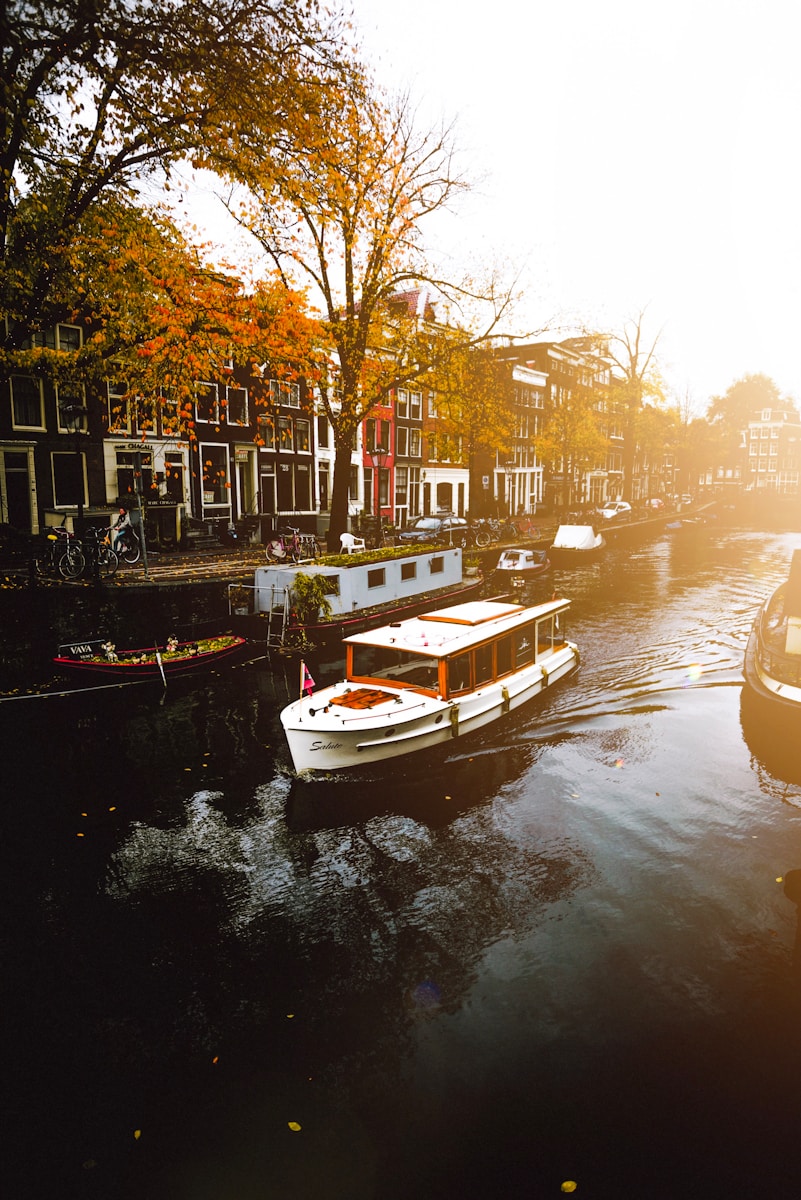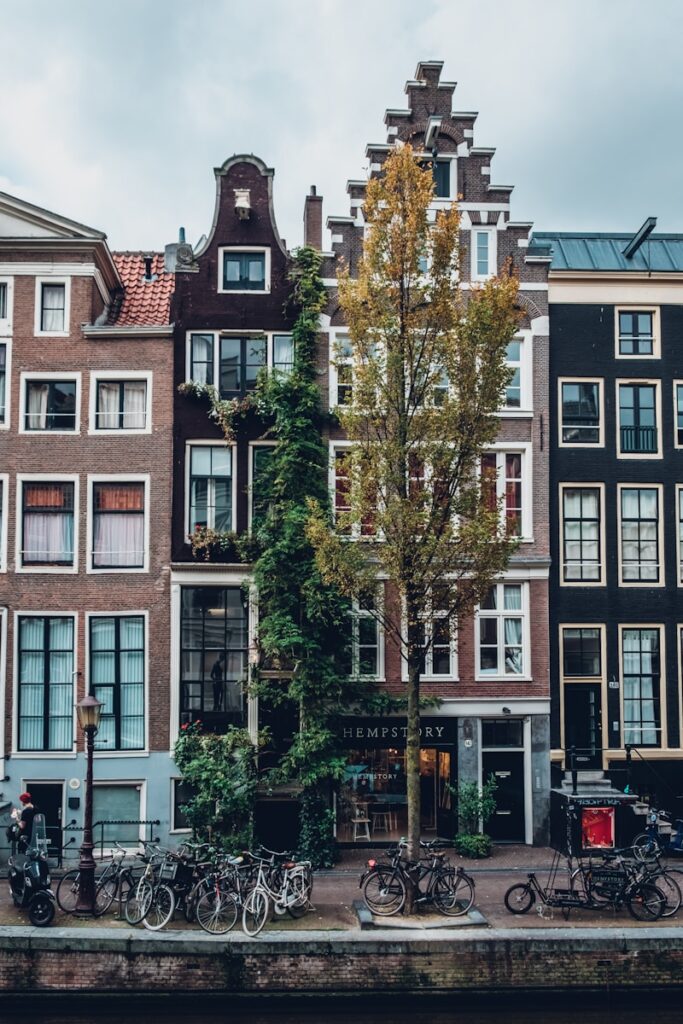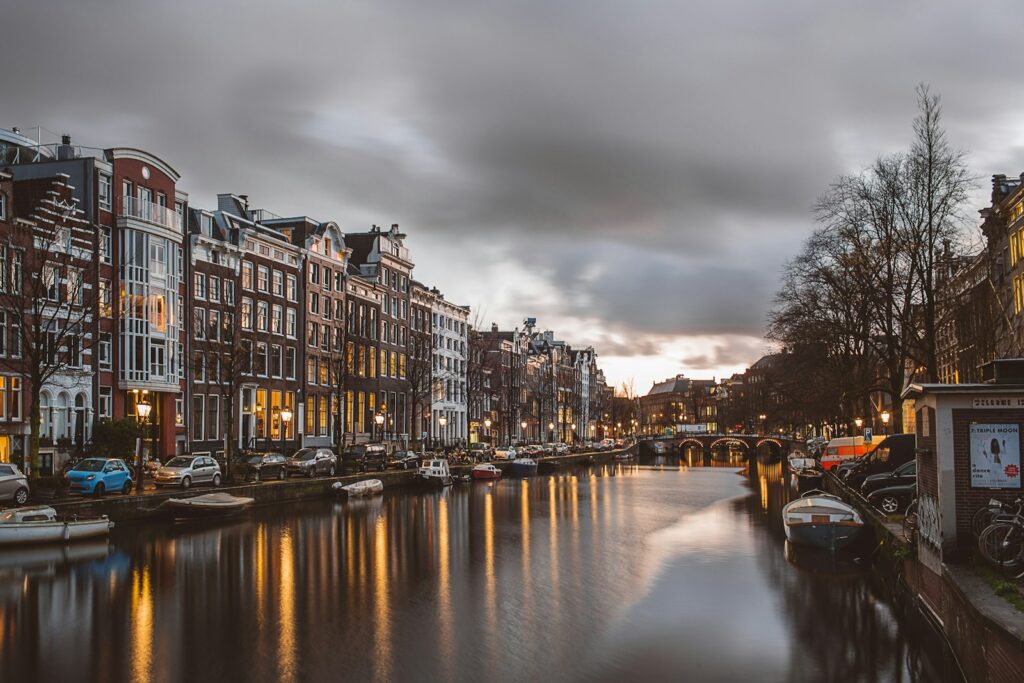Physical Address
304 North Cardinal St.
Dorchester Center, MA 02124
Physical Address
304 North Cardinal St.
Dorchester Center, MA 02124

Amsterdam is one of Europe’s most iconic and visited cities, known for its beautiful canals, historic landmarks, world-class museums, and vibrant cultural scene.
Whether you’re drawn to the city’s rich history, its charming neighborhoods, or its unique art and culture, there’s something in Amsterdam for every kind of traveler. As the capital of the Netherlands, Amsterdam offers a mix of old-world charm and modern-day innovation, making it a must-visit destination for tourists from around the globe.
This comprehensive guide explores the city’s rich history, key attractions, and must-see locations to help you make the most of your visit to Amsterdam.

Amsterdam’s history dates back to the 12th century when it was founded as a small fishing village along the Amstel River. The city’s name is derived from “Amstelredamme,” meaning a dam on the Amstel River. Over the centuries, Amsterdam grew into a major trading hub, particularly during the Dutch Golden Age in the 17th century when the city became one of the world’s leading ports and financial centers.
During the 17th century, Amsterdam blossomed into a wealthy and prosperous city. This era, known as the Dutch Golden Age, saw the rise of the Dutch East India Company (VOC), which helped establish Amsterdam as a key player in global trade. The city’s merchants traded goods like spices, textiles, and precious metals, and this period of economic success led to a flourishing of art, culture, and architecture.
Famous painters like Rembrandt van Rijn and Johannes Vermeer emerged during this time, creating masterpieces that are still celebrated today. The construction of Amsterdam’s famous canal ring also began during this period, designed to support the city’s expanding population and accommodate increased trade.

Amsterdam continued to grow throughout the centuries, becoming the capital of the Netherlands in the 19th century. Despite hardships during World War II, the city bounced back, and today it is a vibrant metropolis known for its open-mindedness, innovation, and high quality of life.
Before diving into the city’s main attractions, it’s important to understand the best ways to get around Amsterdam. The city is known for being incredibly bike-friendly, and renting a bicycle is one of the most popular ways for tourists to explore. With well-maintained bike lanes and flat terrain, biking through the city allows you to see more in less time while enjoying Amsterdam like a local.
In addition to bikes, Amsterdam’s public transportation system is excellent, with an extensive network of trams, buses, and ferries. The GVB card allows you unlimited travel on public transportation, and you can easily hop on a tram or bus to reach major attractions.
For a more relaxed way to see the city, consider taking a canal cruise. These boat tours offer a unique perspective of Amsterdam’s canals and historic buildings, making it a great option for first-time visitors.
Amsterdam offers an incredible range of attractions for visitors, from historical sites and world-famous museums to picturesque parks and neighborhoods. Here are some of the must-see places for tourists in Amsterdam.
One of the most famous museums in the world, the Rijksmuseum is a must-visit for art and history enthusiasts. Located on the Museumplein, the Rijksmuseum houses an extensive collection of Dutch art and historical artifacts, with pieces spanning from the Middle Ages to the modern era. The museum is particularly well-known for its collection of masterpieces from the Dutch Golden Age, including Rembrandt’s “The Night Watch” and Vermeer’s “The Milkmaid”.
In addition to its impressive art collection, the Rijksmuseum’s architecture is a work of art in itself. The museum’s neo-Gothic building was designed by Dutch architect Pierre Cuypers and has been recently renovated to restore its original grandeur. Visitors can spend hours wandering through the galleries, exploring Dutch history and art in one of the finest museums in the world.
A visit to the Anne Frank House is a deeply moving experience, providing a glimpse into one of the most poignant stories of World War II. Located on Prinsengracht in central Amsterdam, the Anne Frank House was the hiding place of Anne Frank, her family, and four others during the Nazi occupation of the Netherlands. It was here that Anne wrote her famous diary, documenting her life in hiding.
The museum allows visitors to explore the secret annex where the Frank family lived in seclusion for over two years. You can see Anne’s original diary on display and learn about the experiences of those who were in hiding. The Anne Frank House serves as a powerful reminder of the horrors of war and the resilience of the human spirit.
Tip: Due to its popularity, tickets to the Anne Frank House sell out quickly. Be sure to book your tickets online in advance to secure your visit.
The Van Gogh Museum, located next to the Rijksmuseum on the Museumplein, is another highlight of Amsterdam’s cultural scene. Dedicated to the life and works of Vincent van Gogh, one of the most famous and influential artists in history, the museum houses the largest collection of Van Gogh’s paintings, drawings, and letters in the world.
Visitors can trace Van Gogh’s artistic journey through his early works, his time in Paris, and his final years in the south of France. Iconic pieces such as “Sunflowers,” “The Bedroom,” and “Wheatfield with Crows” are on display, giving visitors a deeper understanding of Van Gogh’s emotional and creative process.
The museum also provides insight into Van Gogh’s personal life, including his struggles with mental illness and his close relationship with his brother, Theo van Gogh. For art lovers, the Van Gogh Museum is a must-visit destination that offers an intimate look at the life of one of the greatest artists of all time.
If you want to experience the charm of Amsterdam’s old-world neighborhoods, head to the Jordaan District. Once a working-class neighborhood, the Jordaan has transformed into one of the city’s most desirable areas, filled with narrow streets, picturesque canals, and historic homes.
The Jordaan is known for its lively atmosphere, trendy boutiques, cozy cafés, and art galleries. As you stroll through the neighborhood, you’ll find traditional brown cafés (Amsterdam’s equivalent of a pub), where locals gather for coffee or a beer. The area is also home to Westerkerk, a 17th-century Protestant church with a tower that offers stunning views of the city.
Take your time exploring the Jordaan, getting lost in its quaint alleyways and soaking up the atmosphere. On Saturdays, the Lindengracht Market is held here, offering fresh produce, flowers, and local specialties.
Amsterdam’s canals are one of its most defining features and have earned the city the nickname “The Venice of the North.” The canals were constructed in the 17th century during the Dutch Golden Age, creating a unique system of waterways that functioned as both transport routes and flood prevention.
Today, the canals are a UNESCO World Heritage Site and remain an integral part of the city’s identity. There are over 165 canals in Amsterdam, lined with beautiful, gabled houses and picturesque bridges. Exploring the canals is a must for any visitor, whether you choose to walk along them or take a boat tour.
One of the most popular ways to experience the canals is by joining a canal cruise, which offers a guided tour of the city’s most famous waterways. You’ll pass by landmarks like the Magere Brug (Skinny Bridge) and Brouwersgracht, while learning about the history and architecture of Amsterdam.
For a more intimate experience, you can rent a small boat or paddleboard and navigate the canals on your own. This allows you to explore at your own pace, stopping at cafés or parks along the way.
The Royal Palace of Amsterdam is located in Dam Square, right in the heart of the city. Originally built as the Town Hall in the 17th century, the palace was later converted into a royal residence by King Louis Napoleon during the French occupation of the Netherlands. Today, the palace is one of three official residences of the Dutch royal family, although it is mainly used for ceremonial purposes.
The Royal Palace is open to the public when not in use by the royal family, and visitors can explore its grand interiors, including the impressive Citizen’s Hall with its marble floors and stunning sculptures. The palace also houses an impressive collection of 17th-century art, including works by Dutch masters.
As you explore the palace, you’ll gain insight into Amsterdam’s history as a powerful and prosperous city during the Golden Age, as well as the royal family’s role in the Netherlands today.
For a relaxing break from sightseeing, head to Vondelpark, Amsterdam’s largest and most famous park. Located near the Museumplein, Vondelpark is a green oasis in the heart of the city, popular with both locals and tourists.
The park offers plenty of opportunities for outdoor activities, including walking, cycling, picnicking, and even rollerblading. In the summer, you’ll often find open-air performances at the Vondelpark Open Air Theatre, including concerts and theater productions.
Whether you’re looking to relax in nature or enjoy a leisurely bike ride, Vondelpark is the perfect spot to unwind and soak